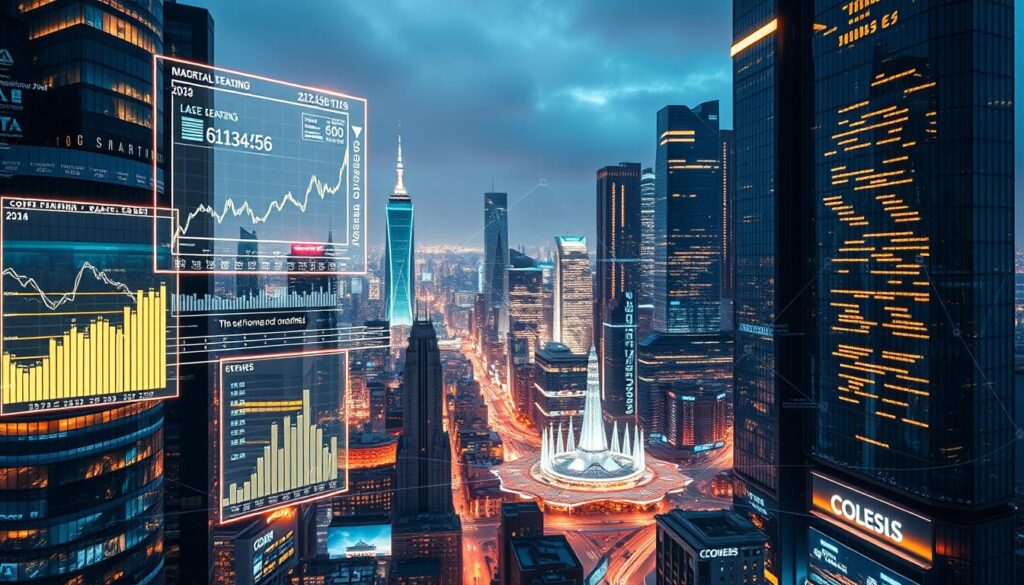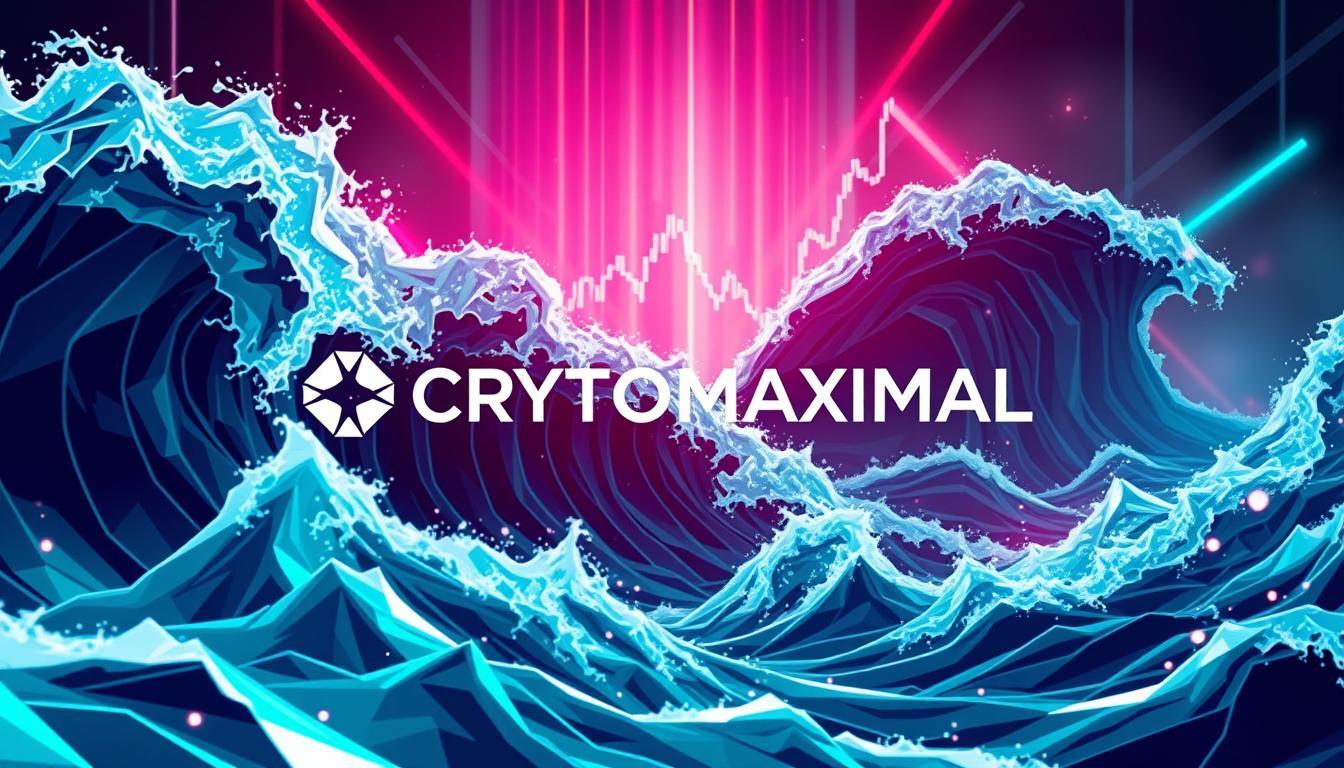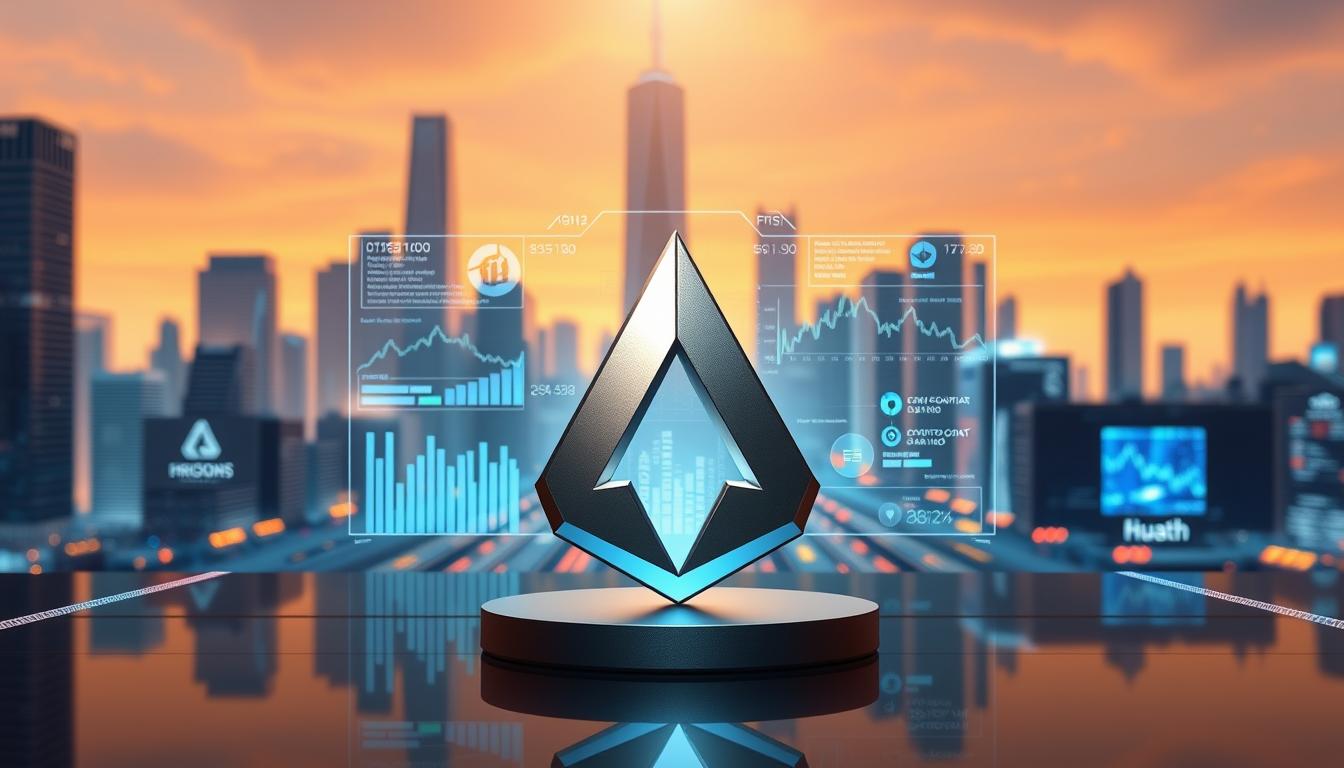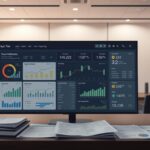Now Reading: How AI Predicts Cryptocurrency Market Trends
- 01
How AI Predicts Cryptocurrency Market Trends
How AI Predicts Cryptocurrency Market Trends
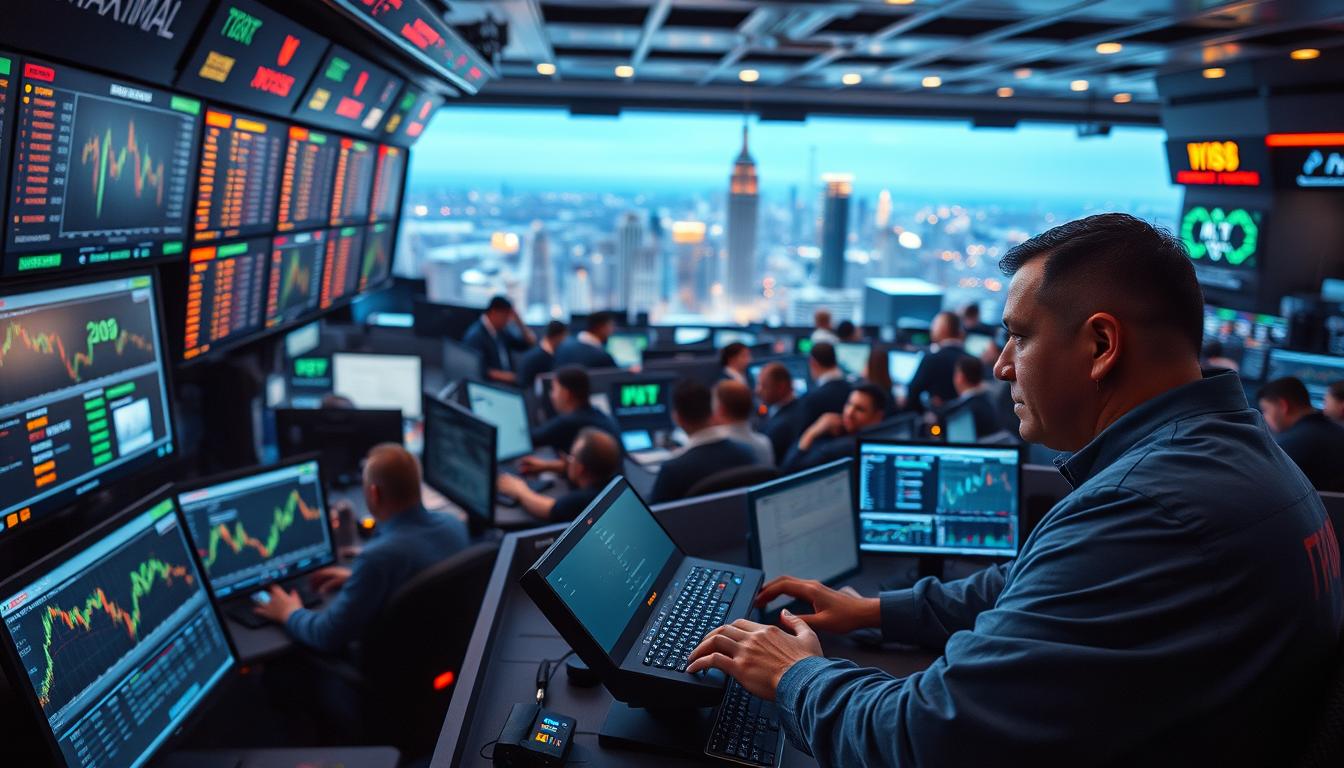
In today’s fast-paced financial world, technology plays a crucial role in shaping strategies. Advanced tools are now essential for navigating volatile environments, especially in digital asset trading. Over half of investment managers already rely on these tools for research, with more planning to adopt them soon.
One standout platform, AlgosOne, combines automation with human oversight to achieve an impressive 80% trade success rate. This hybrid approach ensures both precision and adaptability, making it a trusted choice for traders. With a low entry point of $300 and 24/7 market monitoring, it’s accessible to a wide range of users.
Risk management is critical in unpredictable markets. By analyzing historical patterns, news, and social sentiment, AlgosOne helps users make informed decisions. This blend of technology and expertise keeps capital safe while maximizing opportunities. Learn more about how these tools work to enhance your trading experience.
Introduction to AI in Cryptocurrency Trading
Modern finance is increasingly shaped by cutting-edge technological advancements. These tools are not just enhancing traditional methods but are also redefining the way we approach trading strategies. In the world of digital assets, speed and precision are critical, and this is where advanced technologies come into play.
The Role of AI in Modern Finance
One of the most significant developments in finance is the integration of AI-driven tools. These systems process vast amounts of data at speeds unimaginable to humans. For instance, AI can analyze price and volume information 10,000 times faster than traditional methods. This allows traders to make informed decisions in real-time, maximizing opportunities and minimizing risks.
Platforms like AlgosOne combine automation with human expertise to ensure accuracy. Every trade generated by their algorithms is validated by financial experts, creating a hybrid model that balances speed with reliability. This approach has led to an impressive 80% success rate, making it a trusted choice for traders.
Why AI is Transforming Crypto Trading
AI is revolutionizing crypto trading by eliminating emotional decision-making. Rule-based algorithms ensure that trades are executed based on logic and historical patterns, not gut feelings. This is particularly valuable in volatile markets where emotions can lead to costly mistakes.
Machine learning further enhances these systems by improving with every dataset. For example, grid trading bots can profit from even the smallest price fluctuations, as low as 0.5%. This level of efficiency is unmatched by traditional methods.
However, it’s essential to acknowledge potential challenges. During periods of extreme volatility, such as Bitcoin’s swings in 2024, false predictions can occur. Despite these risks, the benefits of AI-driven trading strategies far outweigh the drawbacks, offering a new level of precision and control.
How AI Predicts Cryptocurrency Market Trends
The integration of advanced technologies has reshaped decision-making in digital asset trading. By leveraging historical data and sophisticated algorithms, these tools provide insights that were previously unattainable. This section explores how machine learning and natural language processing (NLP) are transforming the way traders analyze and respond to price movements.
Machine Learning Models and Historical Data
Machine learning models analyze vast amounts of historical data to identify recurring patterns. For example, Bitcoin’s 4-year halving cycles have been a key focus. These models can predict potential price movements by studying past trends and behaviors. This approach offers traders a data-driven edge in volatile markets.
Platforms like AlgosOne use these models to monitor over 200 crypto news outlets. This ensures that traders stay informed about significant developments. For instance, a 64% surge in Tron addresses was detected before the 2024 rally, highlighting the efficiency of these systems.
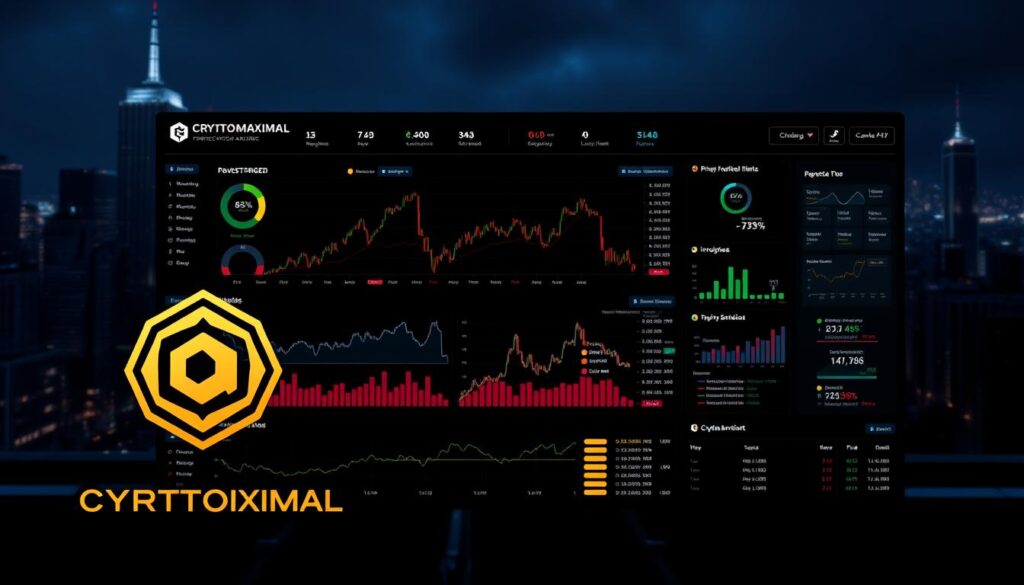
Natural Language Processing (NLP) for Market Sentiment
NLP plays a crucial role in analyzing market sentiment by tracking social media and news. For example, NLP flagged rumors about the FTX collapse 48 hours before it happened. This early warning allowed traders to adjust their strategies and minimize losses.
NLP also tracks whale activity and user sentiment across platforms like Tron, which has over 15 million users. By analyzing this data, NLP provides valuable insights into potential predictions. However, it’s not without limitations. In 2023, misinterpretations of Elon Musk’s “Doge joke” tweets led to false signals.
For more on how these tools work, explore crypto trading algorithms.
Understanding Algorithmic Trading
Algorithmic trading has become a cornerstone of modern financial strategies. By leveraging advanced systems, traders can execute trades with precision and efficiency. These trading bots analyze vast amounts of market data to identify opportunities and minimize risks.
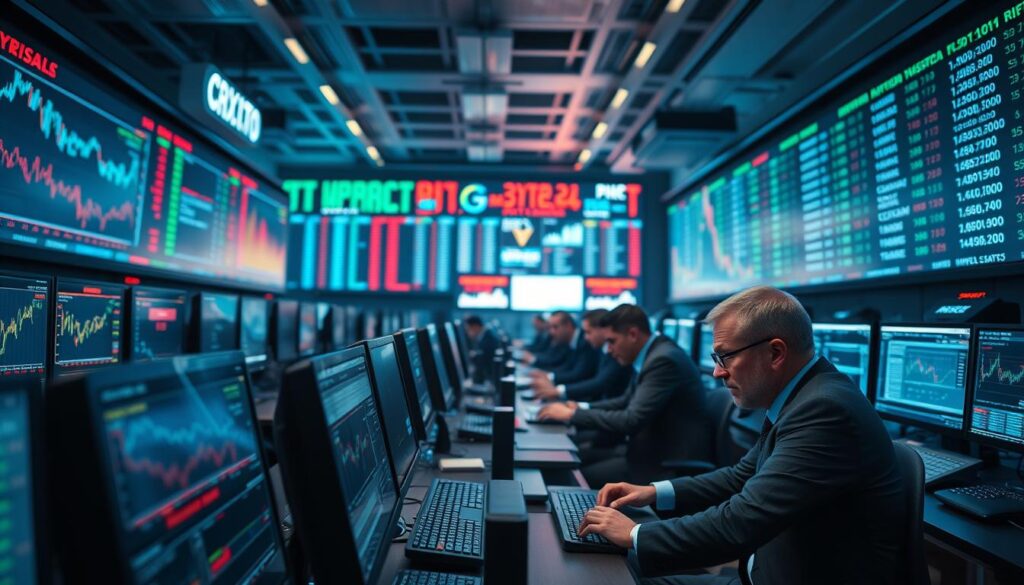
What is Algorithmic Trading?
Algorithmic trading involves using computer programs to execute trades based on predefined strategies. These systems can process information faster than humans, ensuring timely decisions. For example, AlgosOne places 50-200 orders per grid, maximizing opportunities in volatile markets.
Grid Trading: A Popular Algorithmic Strategy
Grid trading is a widely used algorithmic trading strategy. It involves setting buy and sell orders at specific price intervals within a defined range. For instance, a Bitcoin grid between $30K and $35K with 1% intervals can capture small price fluctuations.
AlgosOne’s implementation of grid trading has proven effective. During March 2024, Ethereum grid bots profited significantly within the $3,500-$4,000 range. Similarly, Solana bots yielded an 18% monthly return by capitalizing on volatility.
- Auto-rebalancing: AlgosOne’s systems automatically adjust grids during extreme market conditions, such as the TerraUSD crash.
- Comparison: Grid trading outperforms arbitrage strategies in stablecoin markets due to its adaptability.
- Risks: Over-optimization in sideways markets can lead to reduced profitability.
By combining advanced trading bots with human oversight, AlgosOne ensures both accuracy and reliability. This hybrid approach makes it a trusted choice for traders seeking to optimize their strategies.
Benefits of AI in Crypto Trading
The financial landscape is evolving rapidly, with advanced tools reshaping trading strategies. These systems offer unparalleled efficiency and precision, making them indispensable for modern traders. By leveraging automation and predictive analytics, they provide a competitive edge in volatile markets.

Speed, Efficiency, and Effectiveness
One of the most significant benefits of these tools is their ability to execute trades at lightning speed. For instance, automated systems reduce trade latency to 0.0001 seconds, compared to the 0.25 seconds it takes for human traders. This speed ensures that opportunities are never missed.
Additionally, these systems excel in identifying inefficiencies. They can detect price discrepancies as small as 0.01%, maximizing profitability. A case in point is AlgosOne, which optimized Cardano’s staking yield by 22% through backtesting and real-time adjustments.
Emotionless Trading and Risk Management
Emotionless trading is another key advantage. By relying on rule-based trading bots, decisions are made based on logic and historical patterns, not emotions. This approach minimizes costly mistakes, especially in volatile markets.
Effective risk management is also a hallmark of these systems. For example, AlgosOne’s stop-loss tools limited exposure to the 2022 FTX collapse to just 2%. Similarly, its 5-layer security protocol protects against exchange hacks, ensuring user funds remain safe.
During the Binance CFTC lawsuit, these tools saved users $47 million by adjusting strategies in real-time. Such performance highlights their value in safeguarding capital while maximizing returns.
For more insights into the benefits of these tools, explore advanced trading solutions.
Limitations of AI in Crypto Trading
While advanced tools offer significant advantages, they are not without their challenges. Market volatility can lead to false predictions, as seen in 2023 when XRP’s post-SEC ruling was mispredicted by 38%. Such limitations highlight the need for human oversight in interpreting complex scenarios.
Technological failures and cyber risks also pose significant threats. The $650M Poly Network hack exposed vulnerabilities in smart contracts, emphasizing the importance of robust security measures. Platforms like AlgosOne address these risks through hybrid models, combining automation with expert validation to reduce losses, such as the 71% mitigation during the Luna crash.
Regulatory shifts further complicate performance. For instance, Kraken’s staking algorithm faced a $200M loss due to compliance freezes. Emerging solutions, like quantum-resistant encryption, aim to enhance management and safeguard against future challenges.
FAQ
What is the role of AI in modern finance?
AI enhances decision-making by analyzing vast amounts of data quickly. It identifies patterns and trends that humans might miss, improving accuracy in financial strategies.
Why is AI transforming crypto trading?
AI processes real-time data faster than humans, enabling quicker trades. It also reduces emotional biases, leading to more rational and effective trading decisions.
How do machine learning models use historical data?
Machine learning models analyze past price movements and patterns to predict future trends. This helps traders make informed decisions based on data-driven insights.
What is the role of NLP in market sentiment analysis?
Natural Language Processing (NLP) evaluates news, social media, and other text sources to gauge market sentiment. This helps predict price movements based on public opinion.
What is algorithmic trading?
Algorithmic trading uses automated systems to execute trades based on predefined rules. It ensures faster and more efficient trading compared to manual methods.
What is grid trading in crypto?
Grid trading is a strategy where buy and sell orders are placed at regular intervals above and below a set price. It aims to profit from market volatility without constant monitoring.
How does AI improve trading speed and efficiency?
AI systems analyze and execute trades in milliseconds, far faster than human traders. This ensures better opportunities are not missed during rapid market changes.
How does AI help in risk management?
AI assesses potential risks by analyzing market data and trends. It provides insights to minimize losses and optimize trading strategies for better performance.
What are the limitations of AI in crypto trading?
AI can make false predictions during extreme market volatility. Additionally, technological failures or cyber risks can disrupt trading systems, leading to potential losses.
Can AI trading bots handle all market conditions?
While AI bots perform well in most scenarios, they may struggle during unpredictable or highly volatile market conditions. Human oversight is still essential for optimal results.




